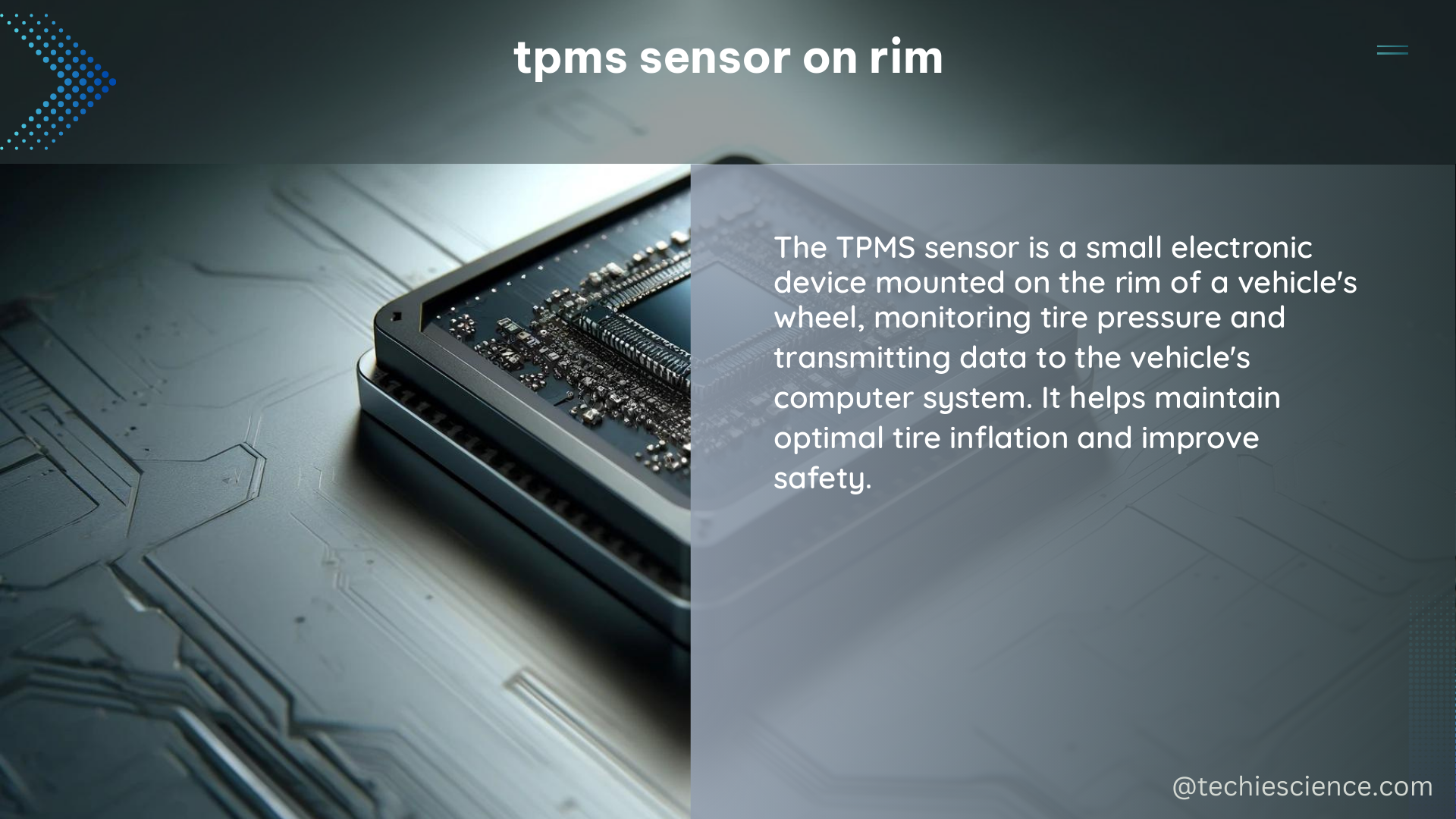The TPMS (Tire Pressure Monitoring System) sensor on the rim is a crucial component of modern vehicles, designed to monitor and alert drivers to potential problems with their tires. These sensors detect low tire pressure or TPMS malfunction, ensuring optimal tire service and safety. The TPMS sensor is typically found within the tire itself, mounted on the wheel assembly, and it relays crucial information to the vehicle’s computer.
Understanding the TPMS Sensor
Direct TPMS Systems
Direct TPMS systems utilize sensors situated inside each wheel to accurately measure individual tire pressure. These sensors constantly monitor and relay data to the vehicle’s onboard computer, which alerts the driver if the pressure in any tire falls below the manufacturer’s recommended level. The sensors are lightweight, only about an ounce (28 g), and are mounted within the well of the rim. They are powered by a lithium battery with a design life of 10 years.
Sensor Coding and Operation
Each sensor is coded differently, which permits the receiver to determine exactly which tire is over or underinflated. The sensors operate only above 20 mph (32 kph) and transmit once per hour when parked, to preserve battery power. If the pressure in a tire rises or falls outside the calibration limits, the condition is displayed by the DIC (Driver Information Center).
Wireless Communication
TPMS sensors communicate with the vehicle’s onboard computer using wireless technology, such as RF (Radio Frequency) signals. When a tire’s pressure drops below the recommended threshold, the TPMS sensors transmit a signal to the vehicle’s computer, which then triggers a low tire pressure warning. This alert allows drivers to address the issue promptly and maintain proper tire pressure, enhancing safety and fuel efficiency.
Technical Specifications and Features

Sensor Dimensions and Weight
- The TPMS sensors are typically small in size, measuring around 1.5 inches (38 mm) in diameter and 0.5 inches (13 mm) in height.
- The sensors weigh approximately 1 ounce (28 grams), making them lightweight and easy to install within the wheel well.
Sensor Power Source
- The TPMS sensors are powered by a lithium-ion battery, which has a design life of up to 10 years.
- The battery is designed to provide a consistent power supply, ensuring reliable operation throughout the sensor’s lifespan.
Sensor Transmission Frequency
- TPMS sensors operate at a frequency of 315 MHz or 433 MHz, depending on the vehicle manufacturer’s specifications.
- The sensors transmit data to the vehicle’s onboard computer at regular intervals, typically once per hour when the vehicle is stationary and once per minute when the vehicle is in motion.
Sensor Pressure Monitoring Range
- TPMS sensors are designed to monitor tire pressure within a range of 0 to 87 psi (0 to 600 kPa).
- The sensors can detect both low and high tire pressure conditions, alerting the driver when the pressure falls outside the manufacturer’s recommended range.
Sensor Pressure Accuracy
- TPMS sensors are required to have a pressure measurement accuracy of ±1 psi (±7 kPa) or better, ensuring precise tire pressure monitoring.
- This level of accuracy helps drivers maintain the optimal tire pressure for their vehicle, improving safety and fuel efficiency.
TPMS Sensor Maintenance and Replacement
Sensor Battery Replacement
- When the TPMS sensor’s battery reaches the end of its design life, typically around 10 years, the sensor will need to be replaced.
- Replacing the TPMS sensor can be a complex process, as it often requires specialized tools and knowledge to properly remove and install the new sensor.
Sensor Relearning and Calibration
- After replacing a TPMS sensor or rotating the tires, the system will need to be relearned or recalibrated to ensure accurate tire pressure monitoring.
- This process typically involves driving the vehicle at a specific speed for a certain distance, allowing the vehicle’s computer to recognize the new sensor and its location.
Sensor Compatibility
- TPMS sensors are specific to the make, model, and year of the vehicle, and they must be compatible with the vehicle’s onboard computer system.
- When replacing a TPMS sensor, it is crucial to use the correct sensor that is approved by the vehicle manufacturer.
By understanding the technical details and features of the TPMS sensor on the rim, vehicle owners can better maintain their tire pressure monitoring system and ensure the safety and efficiency of their vehicles.
References:
- NHTSA Final Rule on TPMS
- Decoding TPMS Sensor on Reddit
- TPMS Reset After Wheel and Tire Change
- How Do Tire Pressure Sensors Work?
- Magnet for Resetting TPMS Sensors

The lambdageeks.com Core SME Team is a group of experienced subject matter experts from diverse scientific and technical fields including Physics, Chemistry, Technology,Electronics & Electrical Engineering, Automotive, Mechanical Engineering. Our team collaborates to create high-quality, well-researched articles on a wide range of science and technology topics for the lambdageeks.com website.
All Our Senior SME are having more than 7 Years of experience in the respective fields . They are either Working Industry Professionals or assocaited With different Universities. Refer Our Authors Page to get to know About our Core SMEs.